These have been the most full years of our life, 2017-2018.
The first major adventure was the birth of Dominic in August, 2017 – in an AirBnB in Kenora, Canada.
In October we moved into a beautiful house – with a fruit orchard and a Soviet pool (a concrete hole in the ground with a plug at the bottom). 
Hunting for plants and bugs in the neighborhood.

For a while we had chickens and ducks, before the dogs ate them.
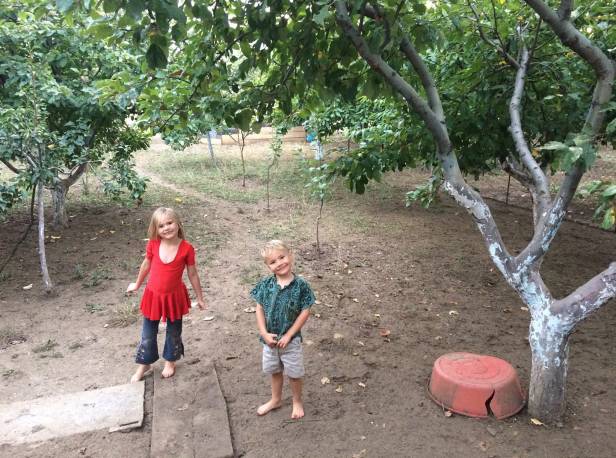
We just have to practice..

The advantage of living in a village – we get milk from Lily, our neighbor. Late one night, the kids rushed over to witness a calf birthing.

Some farm experience for these yuppies.

Good thing the local dogs aren’t Georgian shepherds.

On the hills behind our house.

Harvesting the orchard was a lot of work! Five apple, one apricot, three pear, ten cherry, one fig, two pomegranate, and one persimmon tree.
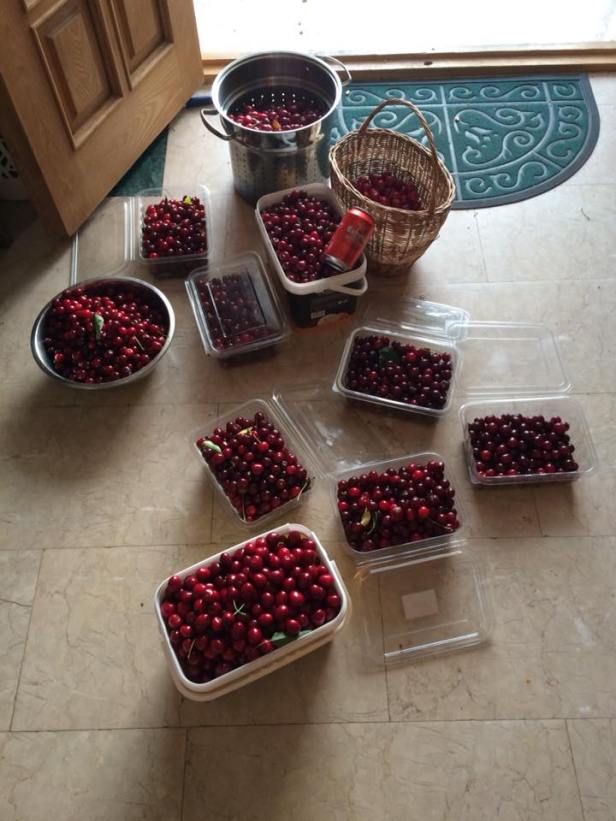
The walk to school includes an authentic Kazakh yurt – the neighbors have horses, and their kids are learning archery. Some true Caucasus Nomads..
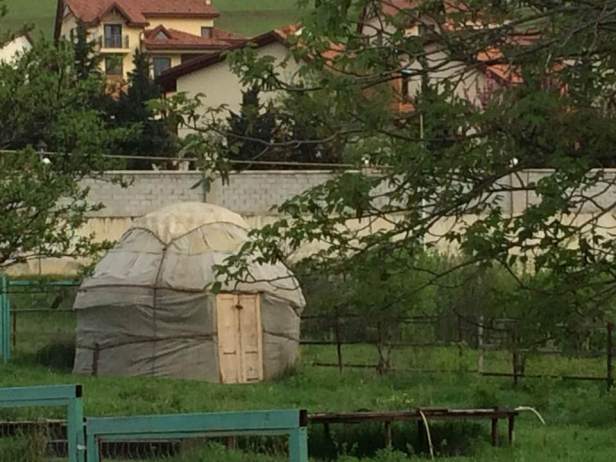
The view on the way to school.

Welcome to QSI International school of Tbilisi!

Andrew has enjoyed some new projects at school – planning hikes, end of year trips, meetings with archaeologists, running debate camps, and teaching Literature, Writing, and Interdisciplinary Research. He was particularly proud of roping in 30 kids to debate club this year, a quarter of the entire secondary school, and hosting the Caucasus’ only English language debate camp. Here he is enjoying the perks of Model UN trip to Athens.

Georgia is a true hikers paradise – endless possibilities with little infrastructure which makes you rely on your own planning and wits. Here is English journalist Peter Nasmyth scouting a new trail in Ateni Valley for the new edition of his book “Walking in the Caucasus”, along with our good Dutch friend, Pieter Elzinga.

Last fall, I took a group of high school guys on their first multi-day hike in Borjomi national park.

Our long time friend and stem-cell hematology guru Kevin Hay visited on his way back from a medical conference in Tehran. We had a great time testing wines at our friend’s Kakheti vineyard. Nika Bakhia makes some of the best organic wines in Georgia.

The kids check out a Qvevri – large clay amphora that gives a distinctive earthy feel to Georgian wines. An archaeological team from the university of Toronto recently confirmed that the same method has been used for 8,000 years!

One of our biggest weekend past-times is “castling”. There are so many ruins of medieval castles lying around with so little information about them, it feels like they are being discovered for the first time. One of our favorites was Khornabuji near the Azeri border, once a large city in 1st century BC – here we spotted four different kinds of eagles, migrating all the way from Saudi Arabia. Other favorites include Atskuri, Oqrotsikhe (near the Turkish border), and Birtvisi.

As a medieval scholar, Rachel loves to imagine living in these castles.
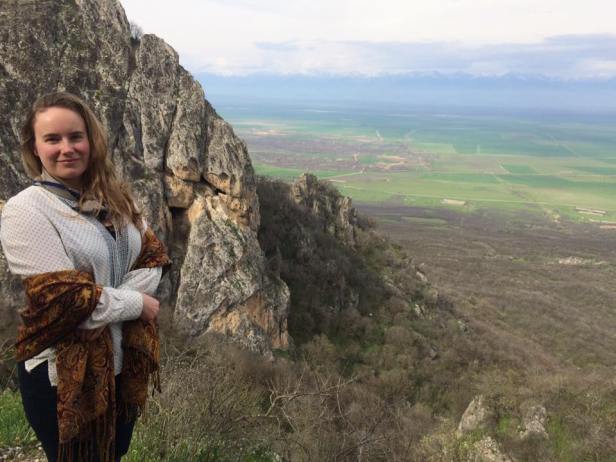
Ksani castle, 30 minutes away from home. This one has a cistern so large, the defenders send the siege attackers a live salmon as a gift, causing them to give up.

Here we are hiking through the picturesque Tmogvi castle with our good friend Grady Bryan and family.

One of the remarkable things about living here: the most important archaeological sites are little visited. Across from Mtskheta, the ancient capital (15 min away from home) is the king’s residence, and built up during Roman times – only a fraction of the metropolis has been studied. Pompey famously captured this city and re-built a bridge across the river.

Perhaps this is the reason Alasdair is interested in archaeology: Once you start looking, these half discovered sites are everywhere.

One of our favorite walks – up to Armazi castle.
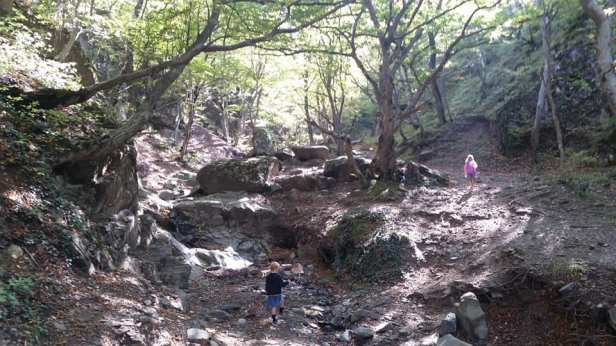
Andrew regularly takes the kids camping – here we are on the road to the Chechen border.

Last year we camped in the remote Gudamakari gorge in the middle of winter.

Don’t miss story time at the fire by headlamp!

Looking through the Soviet era refractor telescope in Abastumani – this year Mercury, Venus, Mars, Saturn and Jupiter were all visible to the naked eye, sometimes all at the same time! Here is Sadiq, on one of our adventures.

Another perk of teaching at an exclusive private school – one of my students’ grandfathers owns the historic TAM factory, where Mig 21s, 25s, etc. were manufactured. Here Alasdair is refurbishing a heat seeking missile.

If anyone wants an upgraded HUD fitted Sukhoi 25 “tank killer” or Mil24 Hind helicopter, I may have connections for you.


In February, a couple of Andrew’s friends planned a two day trek through southern Georgia along the Azeri border from David Gareja monastery to other lesser known lavras close to the Iori river. The shepherds had never seen hikers in this area before, and were curious to see us set up tents. “Why don’t you have a car?” he asked. “Well we like to walk” we responded. “Well if you like walking so much, why don’t you come work with us!!” he implored sincerely. At the end of our hike we were escorted through a multi-family shepherd residence, keeping within a couple feet of our guest, so that the 5 or 6 giant shepherd dogs wouldn’t eat us alive. We asked for water, and were served the best matsoni and peaches in the world. We heard many jackals at night, and found some frescoes in an abandoned monastery.
Around this time we met Sadiq – a Balochistan political refugee, whose family was targeted by the Pakistani military. Briefly, over the summer on a number of adventures, he became part of our family. We explored castles together, and he even read the kids his first bed time story – “Where the wild things are.” After a promised 30 minute walk up to Oqrotsikhe castle became an hour and a half, we had a running joke – “only 30 more minutes,” every time went exploring. Unfortunately, he is unable to gain refugee status, as a return to his country would put him in serious danger, and he is unable to get a visa anywhere else.

Another sad and difficult thing was the murder of the Smith’s, an American family whose mission was to re-establish hand-woven carpets among the Azeri community – a beautiful business called Re-Woven. We had visited Khada gorge only a week before, and were about to meet the Smiths for the first time in Marneuli on our way to Armenia. Tragically, a mentally deranged 19 year old shepherd took their lives while they were hiking in Khada, which shook the entire Georgian community. We were in shock and disbelief and mourned such a lovely family who dedicated their lives to helping not only the Azeri weavers of Marneuli, but contributed to the cultural heritage of the country by resurrecting the ancient tradition of hand woven carpets. Khada, the “valley of 60 towers”, where Alexander marched up to the gates of Dariali, is forever seared in our memory. Rest in peace Smiths, and peace to all the Georgians affected by this tragedy.

We are absolutely numb at the loss of the Smiths.

We stayed in Georgia for the summer this year, and planned a trip back to Armenia for Vardavar, the July water festival. This time we took the route through Dmanisi and the beautiful Lori region. Dmanisi is the site where they discovered the oldest human skull outside of Africa, at 1.9 million years. It is amazing to think that this medieval silk-road town was inhabited on and off for such a long time.

The monk from Dmanisi knew about all about Winnipeg – he had lived in Canada… Here the kids are sitting on a classic medieval tombstone – a sheep with shears.

Lori Berd in northern Armenia is a mystical site, one of the strongholds of the Bagratids from Ani. Local kids rode their bikes around, and hung out at this chapel.
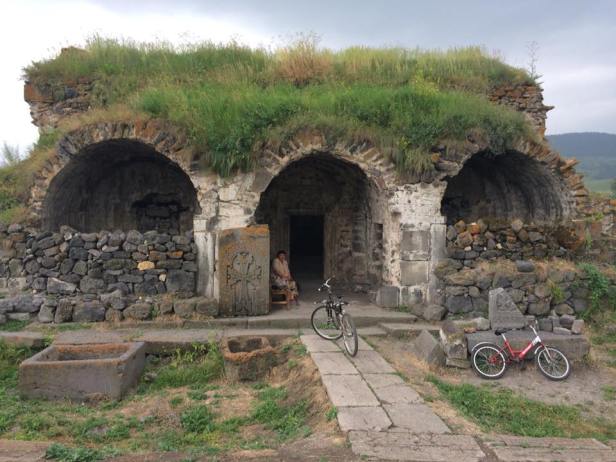
Lori Berd was built in the 900s.

For anyone travelling to Yerevan in July, Vardavar is an absolutely hilarious water festival where everyone (and I mean literally everyone, whether or not you are elderly or carrying a baby) is fair game to be doused with buckets. The kids enjoyed dropping buckets of water on people from our AirBnB balcony downtown – I’ve never heard them laugh so hard. Later, the fire trucks came out and doused people in Swan Lake. We had to change clothes inside the car, otherwise risk getting wet again.

This summer, Andrew worked with the adventure company Caucasus Nomad, owned by his friend Luke Davis.

He continues to extend his skills in guiding young people – you can read about it in the previous blog post.


Another big first for us was being invited to harvest grapes from our landlord’s vineyard next door. In Georgian culture, this is a big honor. We learned the hard way that if you are invited as an honored guest, you cannot refuse, even if they invite you the night before, and you already have plans. The grape harvest is a sacred ritual, deeply embedded in the psyche of Georgians. It must be followed by a supra, or traditional feast.

The kids and I crushed grapes barefoot, the traditional way, in this steel vat (which was full of wasps, by the way).


It was an incredibly busy Fall at school – Andrew gave a professional development session on Socratic seminars, planned end of year adventure trips, served on committees, helped plan the September camping trip, and organized a three day international debate camp. Meanwhile, Rachel was teaching middle school history and literature half-time, and the kids were back to school. First day of school, 2018:

We were glad to host Rachel’s parents – Don and Joan. It was Don’s first international trip, and he enjoyed observing cultural differences and social interactions. Here he is sporting a Soviet police hat at the Tbilisi auto museum:

All Soviet cars were copies of German, American, or Italian ones. Here the Ford Model T is copied – even the GAZ (Gorky Auto Manufacturing) company logo is in the same shape.

Not many people realize that Lavrenty Beria, the NKVD chief who made Stalin’s “death lists,” is Georgian. He would have driven a gangster car like this one.

The museum is a worth a visit – it’s in the industrial neighborhood south of East Point Mall.
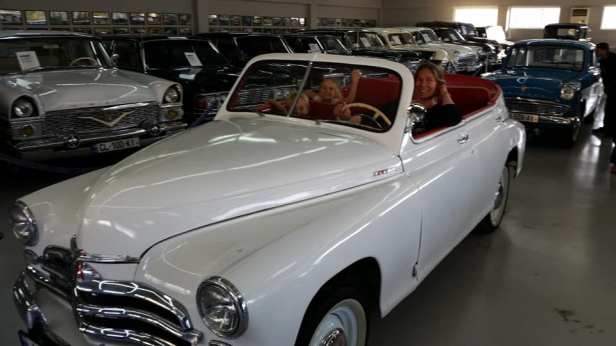
Don and Joan also enjoyed a trip to Kazbegi, and the iconic medieval cave monastery – Vardzia.
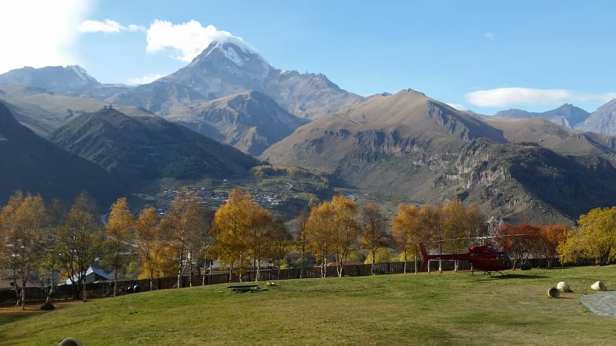
We didn’t actually take a helicopter ride.. After a drive up the Georgian military highway to Rooms Hotel, Don said “I feel like I’m in a James Bond movie”.

So many castles, so little time!

After Don and Joan returned to Canada, both Rachel and I hosted debate camp weekend with world class debate trainer Sharmila Parmanand, and Georgia’s Future Academy CEO Alexander Zibzibadze.

Still, I needed one more adventure before Winter break. I’ve been reading about megalithic structures in Georgia, and wanted to find one of the largest – Lodovani. Only there is hardly any information on it. After some research and sleuthing, my friend Grant drove his kids and mine to Gokhnari village near Manglisi, and a young shepherd kindly guided me up to the large pile of rocks, that on closer inspection is actually a Bronze Age settlement.
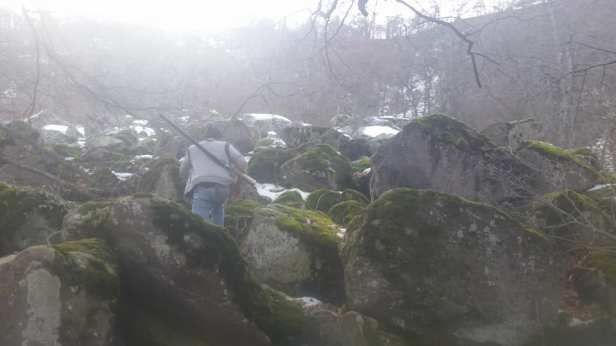
It was incredibly creepy to crawl into cave-like freestanding stone structures – at least they had survived intact for 4000 years!

There were some really interesting pre-Christian grave stones in the Gokhnari St. George church grounds.

This discovery led me on a research quest to understand the significant Bronze Age era in the Caucasus – as Georgia was historically famous for its metallurgy. Jason’s quest for the “golden fleece” is said to refer to the gold panning done in the mountains using sheep skins.

There are very large burial mounds from the Bronze Age – the recently discovered Ananauri site near Lagodekhi is 20 meters high. Both the Trialeti and Martqopi cultures were highly developed in craftsmanship. To think that the Ananauri burial mound was before the time of domesticated horses!

I recently met with David Berikashvili, the head of the archaeological dig at the medieval city of Samshvilde, to see how my students can join his dig. At the University of Georgia, he showed me their recent findings, including a stash of coins.

This one is interesting because it shows a medieval Georgian king sitting cross legged, like the Arabs, with a hunting falcon on his arm.

So Happy New Year – here’s to new adventures in 2019. May we all learn to live with slightly more compassion, care and wonder in the years to come.




